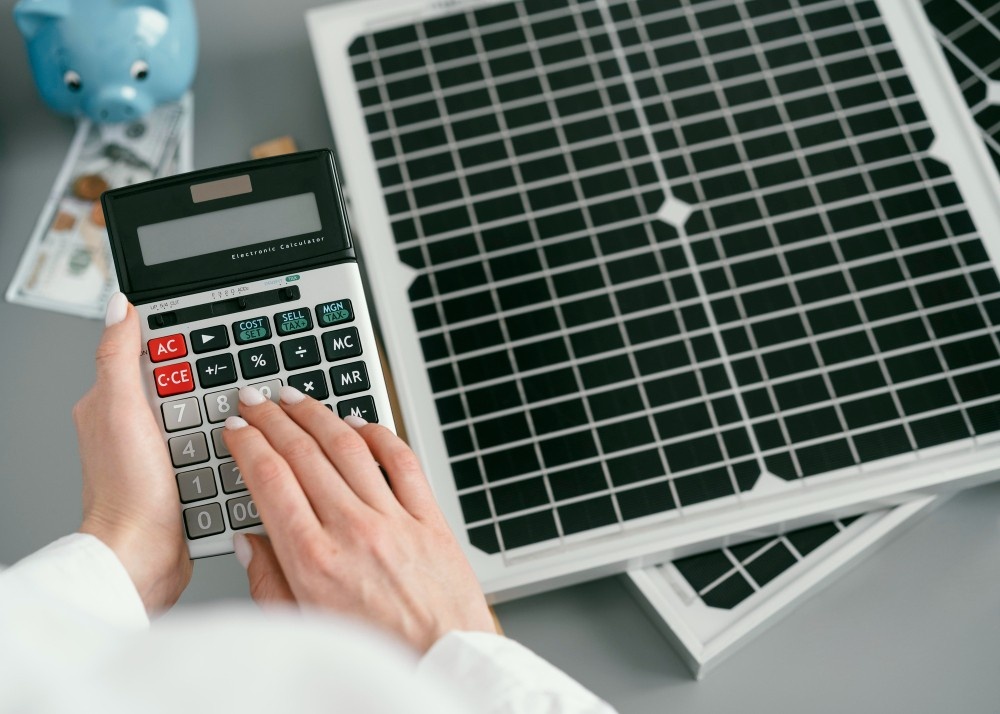
Understanding Why Solar Panel Manufacturing Is So Costly
The renewable energy sector is booming, and solar power has emerged as one of the most viable and sustainable sources of energy. Despite the global push for clean energy and the widespread adoption of solar technology, solar panel manufacturing remains a costly endeavor.
Solar panels cost a lot to manufacture due to raw materials, technology, labor, and economies of scale. By understanding these factors, we can gain insights into the challenges the industry faces and potential solutions for reducing costs in the future.
What Contributes to the High Cost of Solar Panels?
The cost of manufacturing solar panels can be broken down into several key factors, each contributing to the overall price. These include raw materials, technology, labor, and energy costs.
Let’s explore each of these components in detail.
Raw Materials: The Foundation of Cost
The primary raw materials required for solar panel manufacturing include silicon, glass, metals (such as aluminum and copper), and electrical components.
Among these, silicon is the most critical and expensive material. Solar cells are made from silicon, which undergoes a multi-step refinement process before it is ready for use in photovoltaic cells.
High-purity silicon, which is essential for efficient solar cells, is expensive due to the complex process of obtaining and refining it. The silicon price fluctuates based on global supply and demand, but it often represents a significant portion of the cost of a solar panel – typically accounting for 20-30% of the total manufacturing cost.
Glass, which is used for the protective layer of solar panels, also adds to the cost. This glass must be durable, transparent, and capable of withstanding environmental stresses like UV exposure and temperature fluctuations.
Technology and Manufacturing Process
The manufacturing process for solar panels is highly sophisticated and requires advanced technology, which increases production costs.
The steps involved include:
- Wafer cutting: Silicon ingots are sliced into thin wafers, a process that requires high-precision machinery.
- Cell manufacturing: The silicon wafers are treated to form photovoltaic cells, which convert sunlight into electricity. This process requires highly specialized equipment and cleanroom environments.
- Module assembly: Once the cells are produced, they are assembled into panels, which involves connecting the cells, framing, and testing the finished product.
This process, though automated in some cases, still requires significant investment in technology and machinery. The cost of these machines and the energy required to run them can be substantial, especially for large-scale manufacturing plants.
Additionally, quality control measures must be stringent, as any defects in the panels can result in costly failures.
Labor Costs in Solar Panel Manufacturing
Despite lower labor costs in countries like India, solar manufacturing still requires skilled labor, which drives up costs.
Highly specialized technicians and engineers are required for tasks such as wafer cutting, cell processing, and quality control. Even though the industry is increasingly automating some processes, human intervention is still required for overseeing and managing the production lines.
Energy Costs for Manufacturing
Solar panel production is energy-intensive. The process of refining silicon, manufacturing cells, and assembling panels requires a large amount of energy, particularly in regions where electricity prices are high. This drives up the production costs and impacts the price of the final product.
To mitigate this, many manufacturers are increasingly turning to renewable energy sources, such as solar and wind power, for their production needs. This can help reduce operational costs in the long term, but the initial transition to renewable energy infrastructure is expensive.
Capital and Investment in R&D
The solar manufacturing industry is continually evolving, with new technologies and processes being developed to increase efficiency and reduce costs. As a result, companies must invest heavily in research and development (R&D) to stay competitive.
These investments are reflected in the final price of solar panels, as manufacturers must recoup the costs of developing more efficient technologies. Additionally, innovation in solar panel design and materials can lead to improved performance, but at the cost of higher production expenses.
Economies of Scale and Market Dynamics
Another significant factor contributing to the cost of solar panel manufacturing is the economies of scale. While the solar industry has made great strides in reducing costs over the past decade, the production of solar panels still requires substantial initial investment.
Large-scale manufacturing facilities are required to produce solar panels at competitive prices, and these facilities must operate at high capacity to reduce per-unit costs.
However, in countries with lower manufacturing output or limited demand, the scale of production may not be sufficient to achieve low costs. Furthermore, disruptions to global supply chains, such as the recent silicon shortage, can also affect prices.
Import Duties and Tariffs
The cost of solar panels can be increased in countries like India because of import duties on solar cells and modules. The Indian government has imposed anti-dumping duties on solar panel imports from certain countries, which raises the price of imported materials and components. While this is designed to promote local manufacturing, it can drive up production costs for domestic manufacturers, especially when raw materials like high-quality silicon are sourced from abroad.
Moreover, tax policies and subsidies also play a role in determining the cost of manufacturing. Government incentives for local manufacturing can help reduce costs, but inconsistent or changing policies can complicate cost forecasting for manufacturers.
How to Reduce the Cost of Solar Panel Manufacturing
While solar panel manufacturing remains costly, there are several strategies that manufacturers can adopt to reduce expenses:
- Innovation in manufacturing processes: By investing in more efficient manufacturing techniques and automated systems, companies can reduce production costs in the long run.
- Improved supply chain management: Optimizing the sourcing and logistics of raw materials can help reduce material costs, especially with materials like silicon and glass.
- Leveraging economies of scale: Expanding production capacity to meet increasing demand allows manufacturers to reduce unit costs.
- Government incentives: Taking full advantage of government schemes and subsidies designed to promote solar manufacturing can help offset some of the high costs.
The Future of Solar Panel Manufacturing Costs
The cost of manufacturing solar panels remains high due to factors like raw material expenses, energy-intensive production processes, and technological advancements.
For businesses looking to enter the solar manufacturing market or optimize existing operations, VMS Consultants offers expert engineering, architecture, and project management services.
Let us help you navigate the challenges of solar panel manufacturing!





